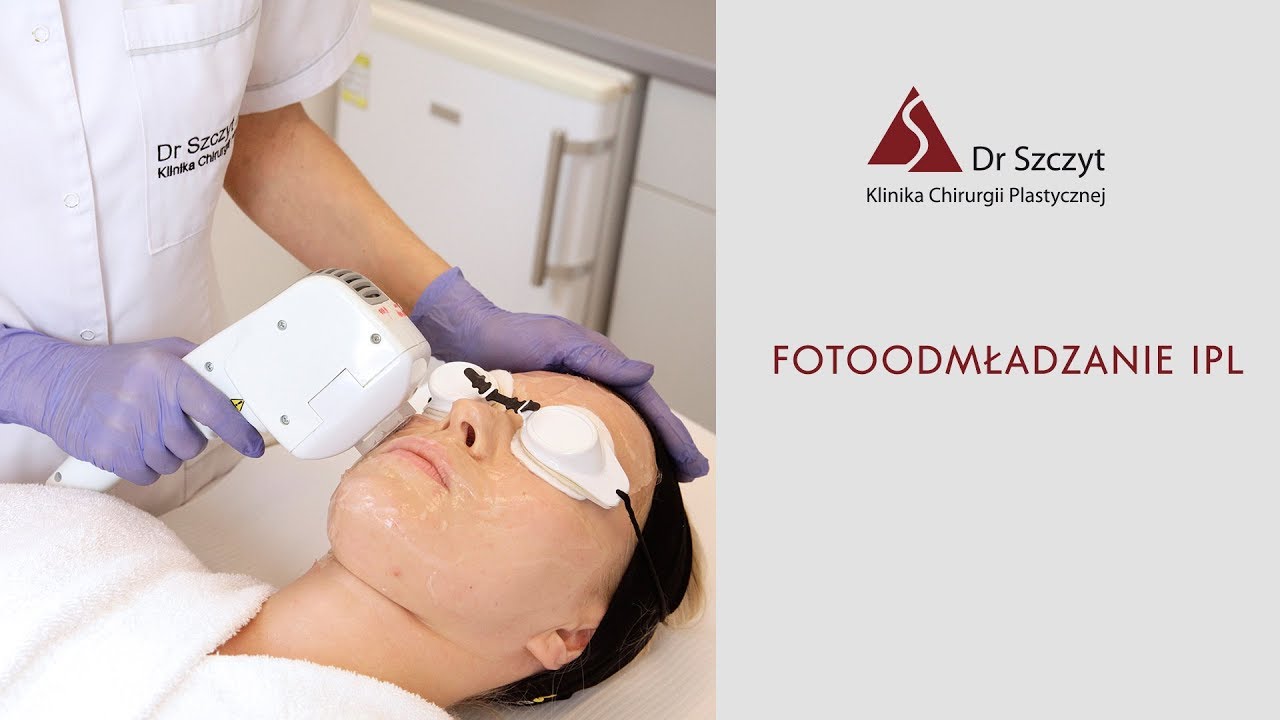How to effectively take care of your neck, décolleté and hands - the key to a youthful appearance

The neck, décolleté and hands often betray our age faster than the face. Proper care of these delicate zones can keep the skin looking young and healthy for longer. Introducing the right rituals and using active ingredients that promote regeneration and protection, as well as using professional aesthetic medicine treatments, can significantly improve the condition of the skin, restoring its radiance, firmness and smoothness.
Natural skin aging processes
After the age of 25, the level of hyaluronic acid in the human body begins to decline, which leads to the first visible signs of aging, namely wrinkles, loss of firmness and prolonged skin recovery time. At a later stage, there is also a decline in elastin and collagen levels, which also significantly affects the condition of the skin. That is why it is so important to take proper care not only of the face, but also of the neck, décolleté and hands.
Face, neck, décolleté and hands - which areas need the most care?
The skin of the face, neck, décolleté and hands differs not only in thickness, but also in the level of exposure to harmful external factors. It is these parts of the body that most often betray age, so they require appropriate and systematic care.
The most delicate skin covers the neck and décolleté. In these areas, the fatty tissue is extremely thin and the number of sebaceous glands is much smaller than on the face, causing the skin to lose elasticity and moisture faster. This results in vertical and horizontal wrinkles, which can appear as early as the age of 30. It is also worth noting that the neck is less protected from the sun than the face, making it far more vulnerable to photoaging, hyperpigmentation and loss of firmness.
The décolletage, like the neck, is characterized by thin skin, prone to dryness and damage. Its sun protection is often forgotten, which accelerates the formation of wrinkles, pigmentation spots and loss of firmness. Due to its proximity to the heart and rich network of blood vessels, the décolleté is also a place where swelling and lymphatic stasis easily form.
Where do you see the signs of aging the fastest?
Hands and neck are the areas where signs of the passing of time can be noticed the fastest. Hands, due to frequent contact with water, detergents and harmful environmental factors like wind and changing temperatures, quickly lose their protective layer and become dry. In addition, the thin fatty tissue on the back of the hands atrophies with age, making the veins and bones visible. Sun exposure without proper protection contributes to discoloration and wrinkles.
On the neck, aging processes are equally visible due to constant mobility - the skin in this area is heavily exploited, which accelerates the appearance of the so-called Venus rings, or characteristic horizontal wrinkles. In addition, the neck is often overlooked in daily care, so the skin quickly becomes dry, less elastic and prone to sagging.
Influence of external factors on the aging process
The aforementioned sun exposure is one of the main factors accelerating skin aging. UV radiation causes degradation of collagen, elastin and hyaluronic acid, leading to loss of firmness, wrinkles and discoloration. The skin of the face, neck, décolleté and hands is particularly vulnerable to UV rays, as these parts are almost constantly exposed. Failure to make a habit of applying SPF sunscreen year-round not only increases the risk of accelerated photoaging, but also increases the risk of developing skin cancer.
Other important factors that accelerate aging are:
- Environmental pollutants that damage the skin barrier and contribute to the formation of free radicals,
- temperature changes, which can cause dryness and weakening of the natural lipid barrier,
- Stress and lack of sleep, which contribute to poorer blood supply to the skin, a decrease in collagen production and slower regenerative processes,
- A diet low in antioxidants, vitamins and omega-3 fatty acids, which play an important role in maintaining healthy, hydrated and firm skin.
Home care of the neck, décolleté and hands - is it enough?
The basis of daily care should be regular moisturization. Applying moisturizing creams to the neck and décolleté, especially in the evening, keeps the skin hydrated and improves its elasticity. In addition, a gentle massage during application stimulates blood circulation, which increases cell oxygenation and improves the absorption of nutrients.
The skin of the hands is particularly exposed to external factors, so regular use of moisturizing creams in summer and regenerating creams in winter helps avoid excessive dryness. What's more, it's a good idea to use gloves when doing household chores to limit contact with irritants.
When is home skin care for the neck, décolleté and hands not enough?
Home care is the basis, but in some cases it may not be enough. This is the case when the skin shows advanced signs of aging, deep wrinkles and discoloration are visible, there is a significant loss of elasticity or a pronounced atrophy of the subcutaneous tissue on the hands.
Some of the most common cases in which to opt for professional treatments include:
- Advanced photoaging - when multiple sun spots and wrinkles appear on the skin due to prolonged exposure to UV radiation;
- Atrophy of the volume of subcutaneous tissue on the hands - visible veins and bones that make the hands look older than other parts of the body. In such situations, regenerative treatments such as lipofilling or mesotherapy are helpful;
- flabbiness and loss of skin tone - especially on the neck and décolletage, where home creams and massages may not yield satisfactory results. It is then worth considering professional firming treatments, such as needle mesotherapy, chemical peels or drainage massages;
- Difficult-to-remove disc oloration - if discoloration does not subside after using brightening cosmetics, retinol, acid or laser treatments may help;
- Scars and skin lesions - when the skin bears traces of scarring, such as from previous injuries or inflammation, home care may not be enough to erase them.
In such cases, it is worth consulting a cosmetologist or aesthetic doctor, who will select the appropriate treatments tailored to the individual needs of the skin. A combination of home care and professional methods gives the best results and allows you to effectively delay the aging process.
What does professional neck, décolletage and hand care consist of?
Professional treatments significantly improve the skin condition of selected body parts. Drainage massages, which stimulate the lymphatic system, help get rid of swelling, improve circulation and increase the absorption of nutrients. The skin becomes firmer and fine wrinkles become shallower.
Chemical peeling, such as with vitamin C, fruit acids or trichloroacetic acid, is also an effective treatment. Dead skin is removed, the skin is visibly refreshed and skin tone is evened out. The treatment is perfect as a so-called banquet treatment, as it provides visible skin tightening the very next day.
Aesthetic medicine treatments
Aesthetic medicine today offers many methods of rejuvenating delicate areas. Needle mesotherapy with hyaluronic acid, vitamins and micronutrients can intensely hydrate the skin, improve its firmness and shallow wrinkles. For the hands of the neck and décolleté, platelet-rich plasma mesotherapy can also be used, which naturally stimulates collagen production for long-lasting results. Hyaluronic acid fillers or tissue stimulators, which stimulate skin regeneration and improve skin density, can also be used to revitalize these areas. The effects of such treatments usually last about a year.
Lipofiling, or fat grafting, such as to the back of the hand, is another option to restore subcutaneous tissue volume and visibly rejuvenate the skin. The procedure is minimally invasive, and recovery time is only a few days.
FAQ
Why is neck, décolletage and hand care important?
The skin on the neck, décolleté and hands is thin, delicate and more susceptible to the aging process than, for example, facial skin. These areas often betray age faster than other parts of the body, so they need regular care and protection.
What are the most common signs of skin aging on the neck, décolletage and hands?
These are primarily wrinkles, but also include loss of firmness, discoloration, dryness and atrophy of subcutaneous tissue on the hands, making veins and bones visible.
What home care methods are most effective?
The most important at-home methods include moisturizing, using creams with SPF, giving gentle massages and protecting hands from detergents.
Can wrinkles on the neck and décolleté be prevented?
Prevention of wrinkles consists primarily of sun protection, proper moisturization of the skin and regular exfoliation of dead skin. Massages and cosmetics containing retinol and vitamin C are also helpful.
What professional treatments are worth considering?
Recommended treatments include needle mesotherapy, drainage massages, chemical peels, laser treatments and platelet-rich plasma treatments. Professional aesthetic medicine treatments help improve skin tone, even out skin tone and reduce wrinkles.
When is it a good idea to consult a cosmetologist or doctor?
It's worth consulting a specialist when home care doesn't work, or when deep wrinkles, discoloration or other visible signs of aging appear that require advanced regeneration methods.
How often should I get treatments for my neck, décolleté and hands?
The frequency of treatments depends on the condition of the skin and the type of procedure. Drainage massages can be performed once a week, while treatments like mesotherapy or chemical peels are usually performed every few weeks, as recommended by a specialist.
Is sunscreen really necessary?
Yes, sun protection is crucial in the prevention of skin aging. UV radiation accelerates the degradation of collagen and elastin, leading to loss of firmness, wrinkles and hyperpigmentation.
What ingredients in cosmetics best promote skin regeneration?
Hyaluronic acid, retinol, vitamin C, ceramides and antioxidants help hydrate, regenerate and protect the skin from harmful external factors.
How long do the effects of professional treatments last?
The effects of a series of mesotherapy treatments can last from a few months to as long as a year, while lipofilling can last for many years, depending on skin type, skin care and lifestyle. Regular repetition of treatments keeps the skin looking young for longer.




.jpg)
.jpg)










